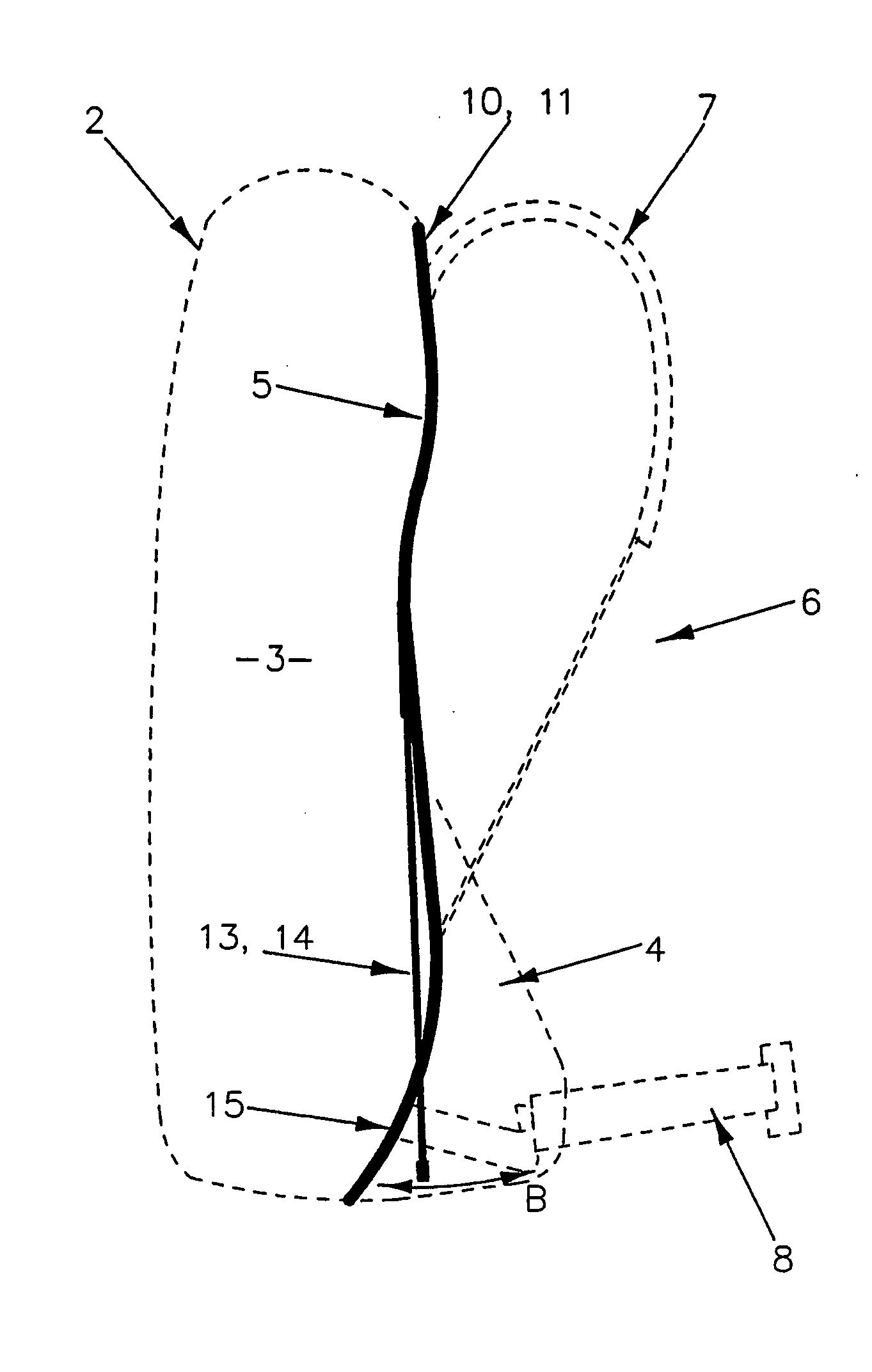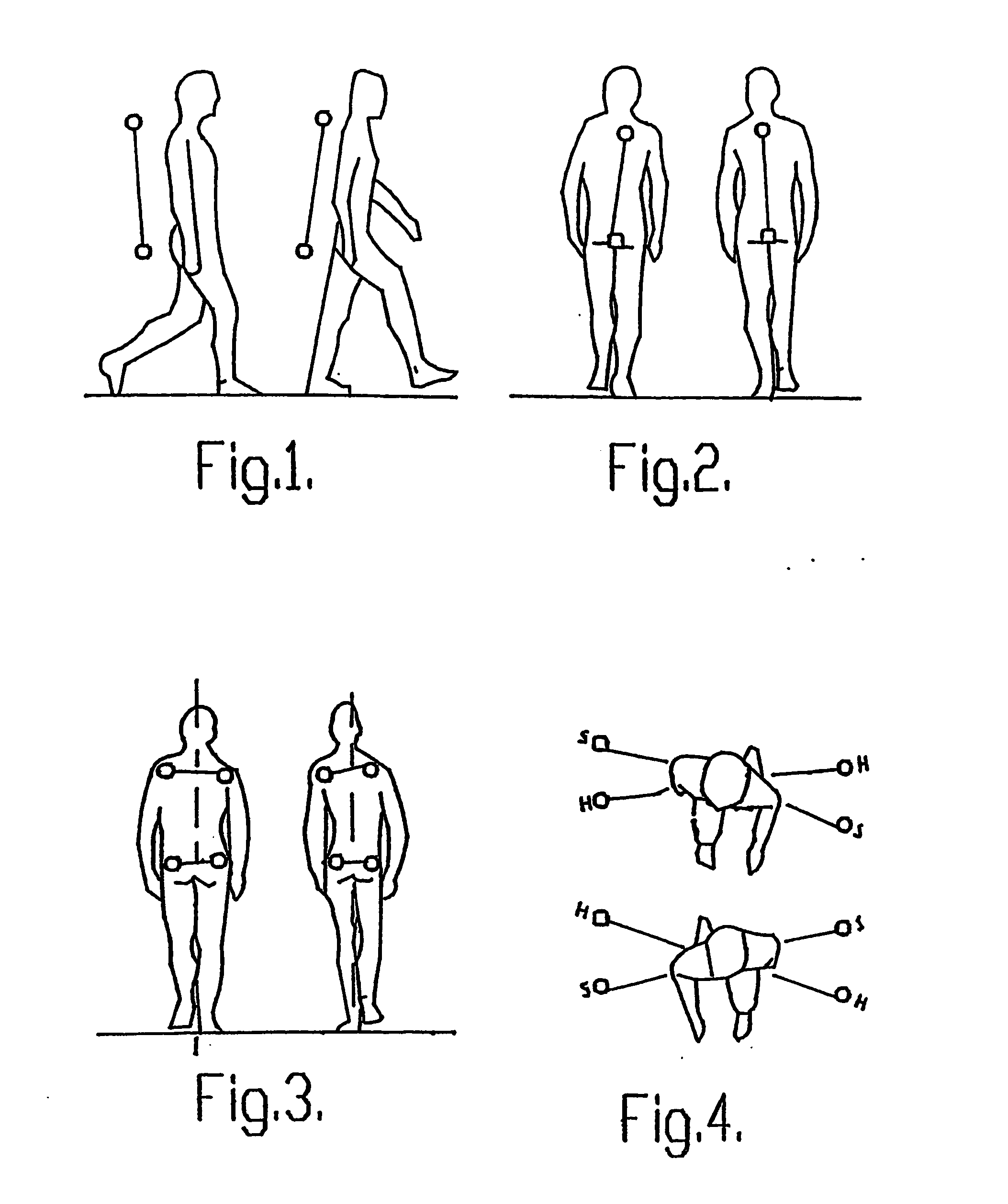Pack and frame for pack
a pack and frame technology, applied in the field of climbing or tramping pack improvement, can solve the problems of back damage, wearer discomfort, wearer discomfort, etc., and achieve the effect of increasing the load on the belt and decreasing the load on the shoulder harness
- Summary
- Abstract
- Description
- Claims
- Application Information
AI Technical Summary
Benefits of technology
Problems solved by technology
Method used
Image
Examples
Embodiment Construction
[0022] Referring in particular to FIG. 8, a climber's or tramper's pack 2 in accordance with the present invention comprises a sac 3 which is of known type (apart from the addition of wings 4 as hereinafter described) which is supported by an internal frame 5 and which is provided with a harness 6 which includes a pair of padded shoulder straps 7 and a hip belt 8. The harness 6 is of known type apart from the novel features of the hip belt as described below.
[0023] Referring in particular to FIGS. 6 and 7, the frame 5 consists of a pair of spaced U-shaped portions 10, 11 which are inclined at an acute angle to each other and are spaced apart by a crossbar 12. The curved end of each U-shaped portions 10,11 is uppermost, and when the frame is inserted Into the sac 3, the U-shaped portions support the upper part of the sac.
[0024] The outer leg 10a, 11a of each U-shaped portion is connected to a flexible rod 13,14, the longitudinal axis of which is aligned with the longitudinal axis o...
PUM
 Login to View More
Login to View More Abstract
Description
Claims
Application Information
 Login to View More
Login to View More - R&D
- Intellectual Property
- Life Sciences
- Materials
- Tech Scout
- Unparalleled Data Quality
- Higher Quality Content
- 60% Fewer Hallucinations
Browse by: Latest US Patents, China's latest patents, Technical Efficacy Thesaurus, Application Domain, Technology Topic, Popular Technical Reports.
© 2025 PatSnap. All rights reserved.Legal|Privacy policy|Modern Slavery Act Transparency Statement|Sitemap|About US| Contact US: help@patsnap.com



